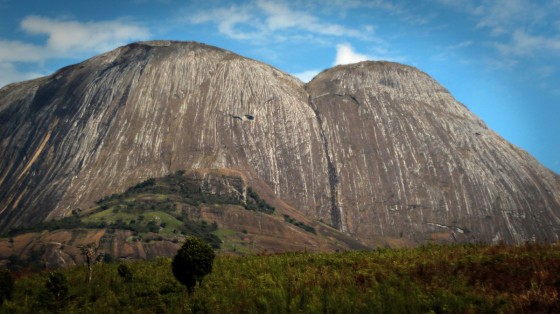
The Lost Mountain combines discovery, adventure, and ultimately survival in one of the world’s least explored and most threatened habitats. Mt. Namuli, a 7,936-foot granite monolith, is the largest of a group of isolated peaks that tower over the ancient valleys of northern Mozambique. Here, plants and animals have evolved as if on dispersed oceanic islands, so that individual mountains have become refuge to their own unique species of life, many of which have yet to be discovered or described by science. Biologists and conservationists from around the world have identified Mt. Namuli as a global hotspot: a place of critical biodiversity and an opportunity to model a new vision for wildlife preservation that integrates the wishes and needs of local people.
Mt Namuli is one of the most significant, exposed, and understudied massifs in the Eastern Afromontane. In 2012, the Critical Ecosystems Partnership Fund (CEPF)—a joint initiative of l’Agence Française de Développement, Conservation International, the European Union, the Global Environment Facility, the Government of Japan, the MacArthur Foundation and the World Bank—designated Namuli as a Level 1 Priority Key Biodiversity Area.
In May 2014, the Lost Mountain team launched a pioneering biological study of the cliffside habitat of Namuli’s 2,000-foot granite face in an effort to fill the glaring “Namuli Gap” in Eastern Afromontane species distribution. In concert with this expedition, our conservation team conducted a phase I field assessment to determine the first steps of a viable and actionable integrated conservation plan predicated on involvement of multi-sector stakeholders: from local community members and businesses to NGOs, to local and national governments.
The Lost Mountain is directed by the Lost Mountain Consortium, including US-based Additive Adventure and Mozambique-based LUPA. In 2015-2017 the Consortium moves forward with the following:
- Implementation of a multi-tiered Mount Namuli Conservation Plan to create meaningful and lasting conservation and development gains for Namuli.
- Creation of innovation-based practices for conservationists (derived from the Namuli experience) that can be used in other locales and environments.
- Hosting of two international “Disruptive Conservation” events to increase local and global multidisciplinary dialogue and action. Follow the first in 2015 and stay tuned for news of the 2016 event.
- Release of the Lost Mountain Film (winter 2015)
